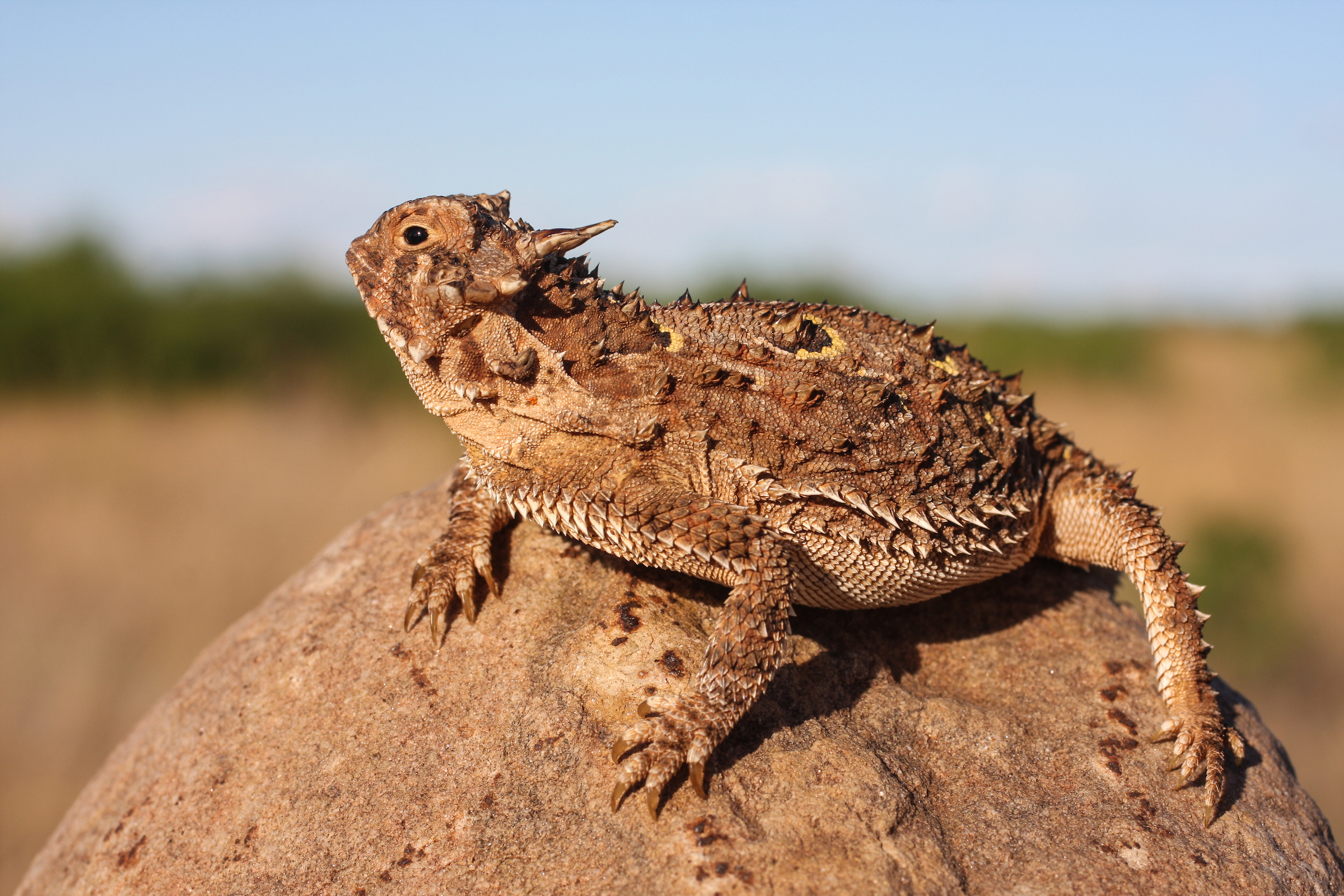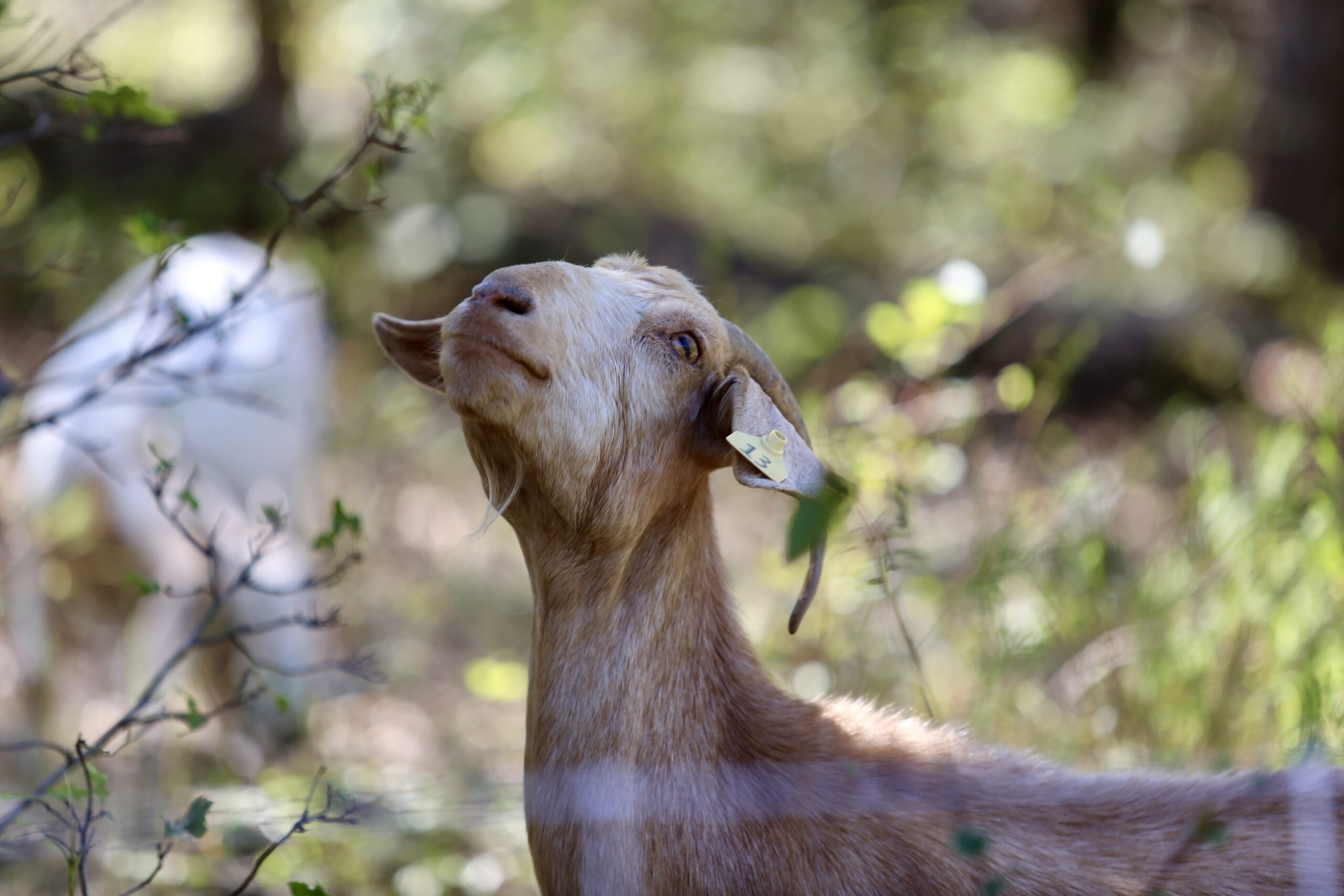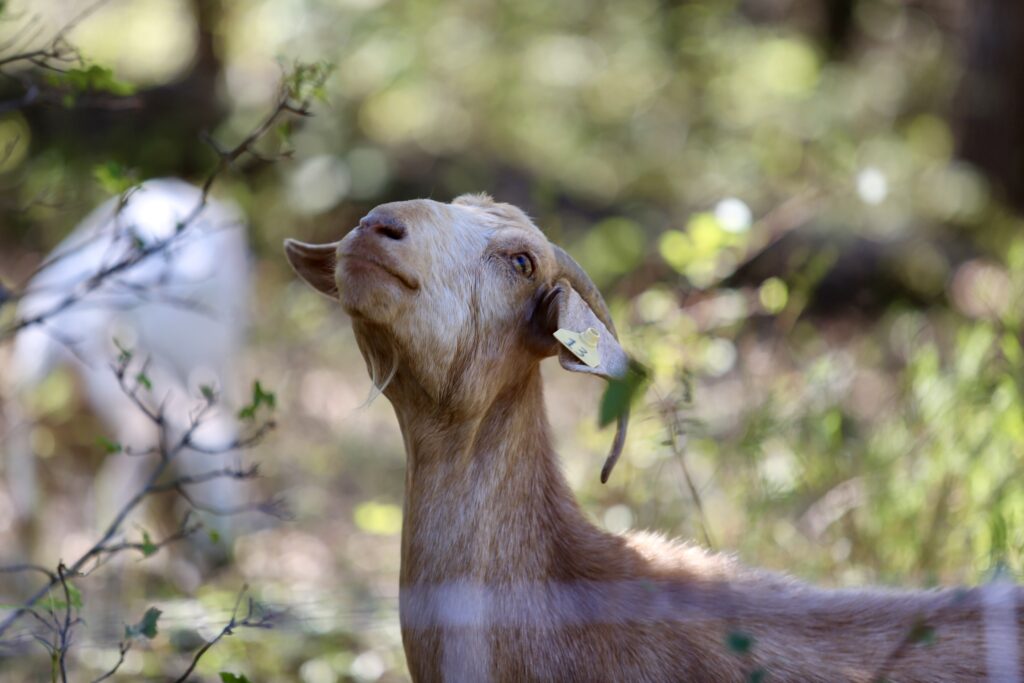HOME
Conserving and Restoring the Horned Toad’s Natural Habitat

By Jessica Crabtree
Texas is well known for its state flag, shape, size and of course, the Texas Longhorn. Another historic figure, much smaller, is sometimes considered the state’s mascot. It is the iconic Texas horned lizard, also known as the horned frog or horned toad.
Their scientific name Phrynosoma means “toad-body.” The interesting creatures are named for the crown of horns on their heads, their size and number of horns, which vary among species.
Unfamiliar to most, the horned toad, lizard or frog is not an amphibian, but is a reptile with scales, claws and reproduces on land. According to Texas Park and Wildlife, there are more than a dozen different horned lizard species throughout western North America. The horned lizard wears a fierce appearance with its flat body and numerous horns. All of the horned toad’s horns are prominent, with two large horns central to the head spines, which are much longer.
A horned toad is brown in color and has two rows of fringed scales along each side of its body. Although intimidating to an observer, the horned toad offers no harm. Amazingly enough, the reptile’s appearance and coloration allow it excellent blending to its environment when necessary. The Texas horned lizards have a light line that can be indentified, extending across from the head down the middle of the back. It is the only species of horned lizard to have a dark brown strip that extends downward from the eyes and across the top of their head.
In Texas, there are three species of horned lizards. The most widespread is the Texas Horned Toad (Phrynosoma cornutum).
The other two species being Round-Tailed Horned Lizard (Phrynosoma modestum) and the Greater Short-Horned Lizard (Phrynosoma hernandesi).
These species inhabit arid and semiarid habitats in open areas with sparse plant cover. However, they can each be readily distinguished. It is common one may find a horned lizard in loose or loamy soil since they dig for hibernation, nesting and insulation.
As for other areas the horned lizard inhabits, the Texas Parks and Wildlife reports horned lizards range from the south-central United States to northern Mexico, throughout much of Texas, Oklahoma, Kansas and New Mexico. In recent years the decrease in population has grabbed the attention of landowners, ranchers, farmers and horned toad lovers. Currently, according to Texas Parks and Wildlife, the Texas horned lizard is listed as a threatened species in Texas (federal category C2).
To read more pick up a copy of the September 2017 NTFR issue. To subscribe call 940-872-5922.
HOME
Goats Get To Work

One of my professors out at Texas Tech University always told us that we aren’t just raising cattle, we’re raising grass, because without grass there is no cattle business. The same applies to most livestock species and crops we seek to raise- without good land management, no good yield can grow.
To read more, pick up a copy of the November edition of North Texas Farm & Ranch magazine, available digitally and in print. To subscribe by mail, call 940-872-5922.

Farm & Ranch
Acorn Toxicity

By Barry Whitworth, DVM, MPH
With the prolonged drought, most pastures in Oklahoma end up in poor condition. With the lack of available forage, animals may go in search of alternative foods.
If oak trees are in the pastures, acorns may be a favorite meal for some livestock in the fall. This may result in oak poisoning.
Oak leaves, twigs, buds, and acorns may be toxic to some animals when consumed.
To read more, pick up a copy of the November edition of North Texas Farm & Ranch magazine, available digitally and in print. To subscribe by mail, call 940-872-5922.

Farm & Ranch
Silver Bluestems

By: Tony Dean
There are a handful of grasses on North Texas grazing lands ranchers need to know, not because they are highly desirable, but rather because they are not of much value. I call them “decom” plants, which is am acronym for “Don’t Ever Count On Me.” Silver bluestem is a “decom” grass.
Silver bluestem is a perennial which grows in all areas of Texas. It can survive in almost all soil types, and in full sun conditions or in semi shade. It grows up to three feet tall and is easily recognized with the presence of the white fuzzy seed head. Also, one of the identifying characteristics of Silver bluestem is a bend in the stems at each node, causing the plants to take on a rounded shape as they mature.
To read more, pick up a copy of the November edition of North Texas Farm & Ranch magazine, available digitally and in print. To subscribe by mail, call 940-872-5922.

-

 Country Lifestyles2 years ago
Country Lifestyles2 years agoScott & Stacey Schumacher: A Growth Mindset
-

 Country Lifestyles8 years ago
Country Lifestyles8 years agoStyle Your Profile – What your style cowboy hat says about you and new trends in 2017
-

 HOME8 years ago
HOME8 years agoGrazing North Texas – Wilman Lovegrass
-

 Equine1 year ago
Equine1 year agoThe Will to Win
-

 Country Lifestyles5 years ago
Country Lifestyles5 years agoAmber Crawford, Breakaway Roper
-

 Outdoor9 years ago
Outdoor9 years agoButtercup or Primrose?
-

 Country Lifestyles8 years ago
Country Lifestyles8 years agoJune 2016 Profile – The man behind the mic: Bob Tallman
-

 Country Lifestyles8 years ago
Country Lifestyles8 years agoDecember 2016 Profile, Rusty Riddle – The Riddle Way




